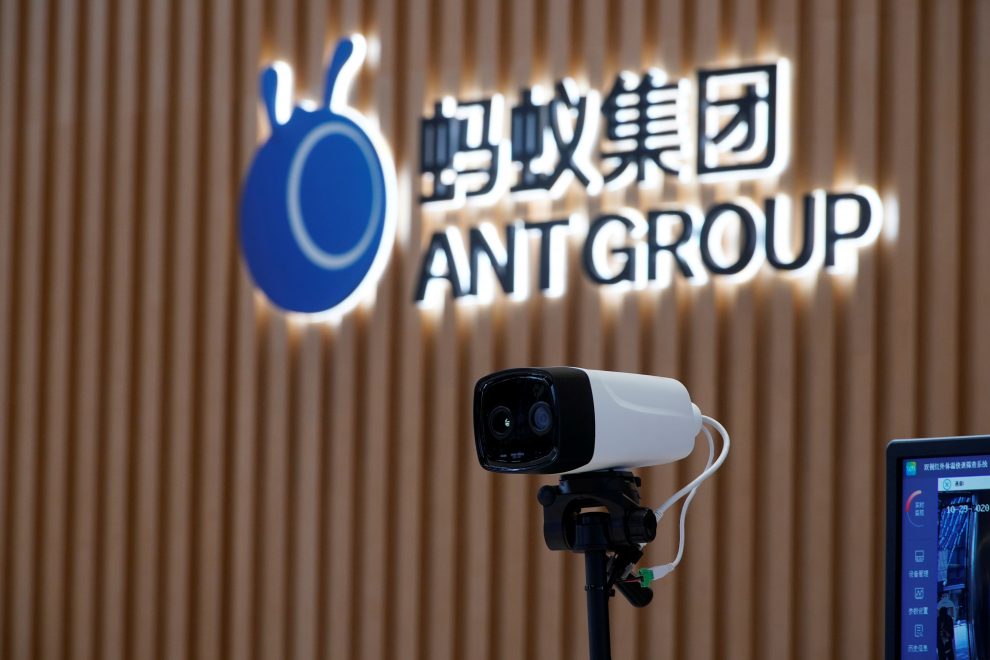China’s banking regulator has introduced more specific rules on online lending that analysts say will further cripple growth of fintech companies such as Ant Group.
The circular issued on Saturday by the China Banking and Insurance Regulatory Commission (CBIRC) said partners that jointly offer loans with commercial banks must contribute not less than 30% of the funding for loans, effective from 1 January 2022.
The CBIRC also requires that loans jointly offered by a commercial bank and each of its partners must not exceed 25% of the bank’s tier-1 net capital, and that a bank’s online lending balance must not exceed 50% of the bank’s total lending balance.
Commercial banks should “independently” carry out risk management for their online lending business instead of “outsourcing” such work, and local banks are not allowed to provide online lending outside of their place of registration, CBIRC said.
The new rules further clarifies and standardizes the regulatory requirements for online lending, and are supplementary to framework guidelines introduced in July last year, according to the top banking and insurance regulator.
Concern over fintech giants
China has stepped up scrutiny over fintech companies amid mounting concerns about their increasing influence and the financial risks their services may bring to the real economy.
In November, the central bank and CBIRC issued new rules for micro-lending that were a significant blow to Ant Group’s valuation, and led to the derailment of Ant’s $35-billion share sale.
Last month, the regulators introduced rules that prohibited banks from selling deposit products online through fintech platforms.
Following discussions with Chinese authorities on a restructuring plan, Ant has reportedly agreed to become a financial holding company, making it subject to capital requirements similar to those for banks.
The new online lending rules are expected to further cripple growth at Ant, whose Jiebei and Huabei units had facilitated 1.8 trillion yuan ($278 billion) in consumer loans to 500 million people as of June 30, with only about 2% being kept on the parent’s balance sheet.
Concerns that it will need to raise capital to plug the shortfall and seek national licences have prompted analysts at Morningstar and others firms to slash estimates on Ant’s valuation by half from $280 billion before its scrapped listing.
The 30% minimum funding requirement for online lending is in line with the micro-lending rule introduced in November, a spokesperson from CBIRC said in a statement.
Ant Group’s Jiebei and Huabei micro-lending businesses previously only contributed about 1-2% of the funding for joint-loans with banks, Sun Haibo, founder and chairman of research firm Financial Regulation & Law, said.
Vast boost in capital needed
The new rules would mean that Ant Group needs to almost quadruple the registered capital for these two businesses – to 140 billion yuan ($21.7 billion) up from 35 billion yuan ($5.4 billion), he said.
“Contributing 2% of the funding, Ant Group was able to offer 1.8 trillion yuan of joint loans with only 36 billion yuan of loans on its balance sheet,” Sun said.
“If its contribution ratio is increased to 30%, Ant needs at least 540 billion yuan of on-balance-sheet loans and 170 billion yuan of asset-backed securities (ABS), or 710 billion in total, to be able to offer the same amount of joint loans.
“Leveraged up five times, which is the maximum for on-balance-sheet loans, Ant needs to increase its capital to 140 billion yuan (the current capital of Ant is about 35 billion yuan),” he said.
Tencent ‘Also Affected’
Besides Ant Group, the new rules will likely affect Tencent’s joint-lending business as well, banking industry researchers from Soochow Securities said.
“Tencent may also need to restructure its business. The market shares of the fintech giants will also shrink, as the regulator has capped the proportion of co-lending by banks with tech platforms,” they said.
The days that fintech companies such as Ant Group and Tencent could earn a larger portion of the revenue while assuming smaller risks in joint lending with banks are gone, analysts have said.
“Previously, some fintech companies were able to use their advantages in data and risk models to earn a larger portion of online lending revenue with little funding contribution. On the other hand, traditional financial institutions not only had to provide most of the funding and bear the risks of loss, but also earned less revenue,” Li Mengyu, an analyst from Bank of China, said.
Under such a model, fintech companies were able to expand their business exponentially while smaller banks that over-relied on fintech companies’ algorithms were exposed to more risks, he said.
Although the new rules will hurt smaller bank’s ability to extend access to customers in more affluent areas, they will help contain risks, foster long-term quality growth, and return local banks to their original purposes of serving the local economies, Li said.
• By Iris Hong
This page was upgraded on January 21, 2022 for style purposes.
SEE ALSO:
Ant IPO could get back on track if it follows the law: PBoC chief
Ant and Tencent drop ‘bank deposit shopping’ as Beijing cracks down
Ant Group IPO swept off the table
























